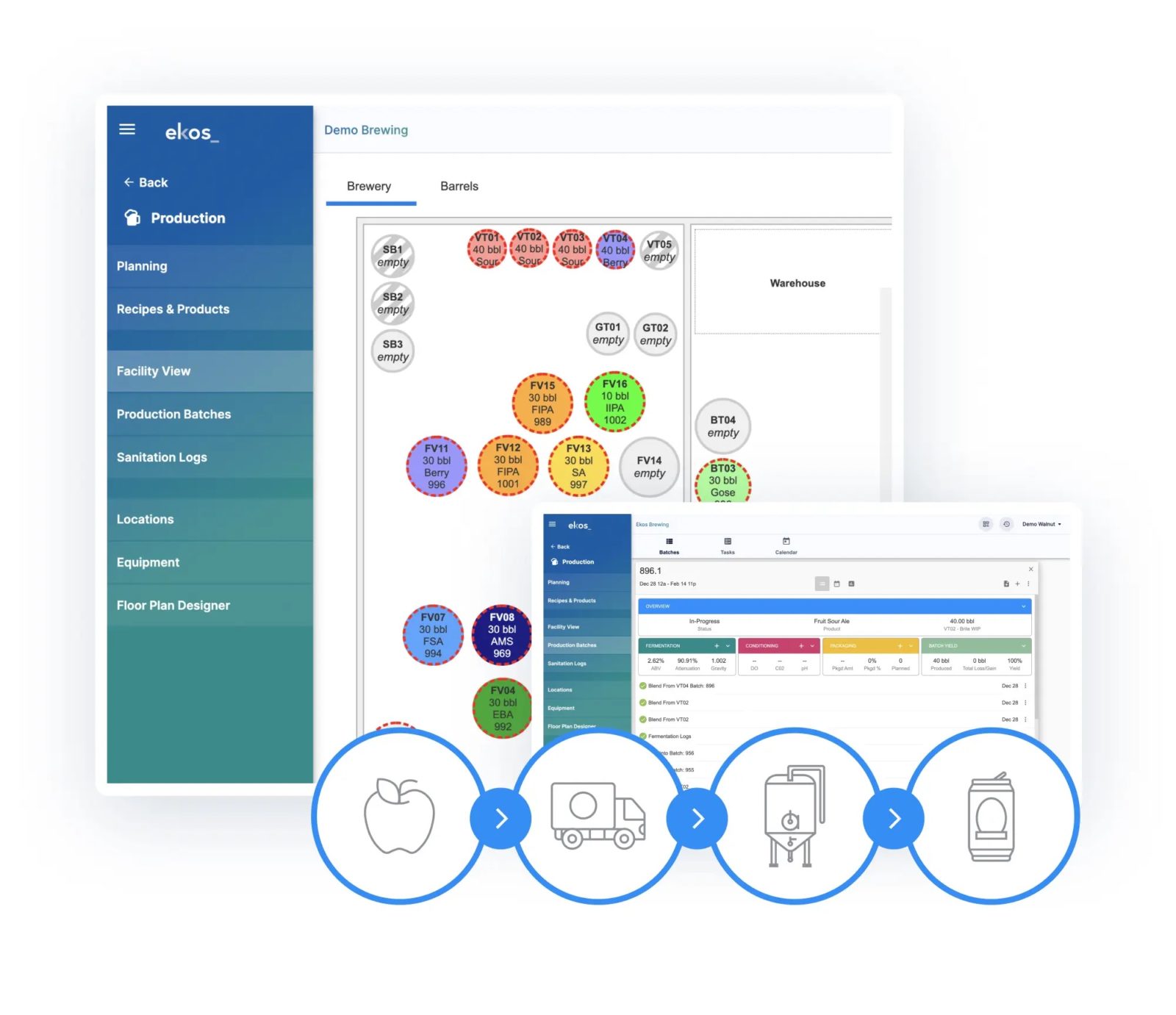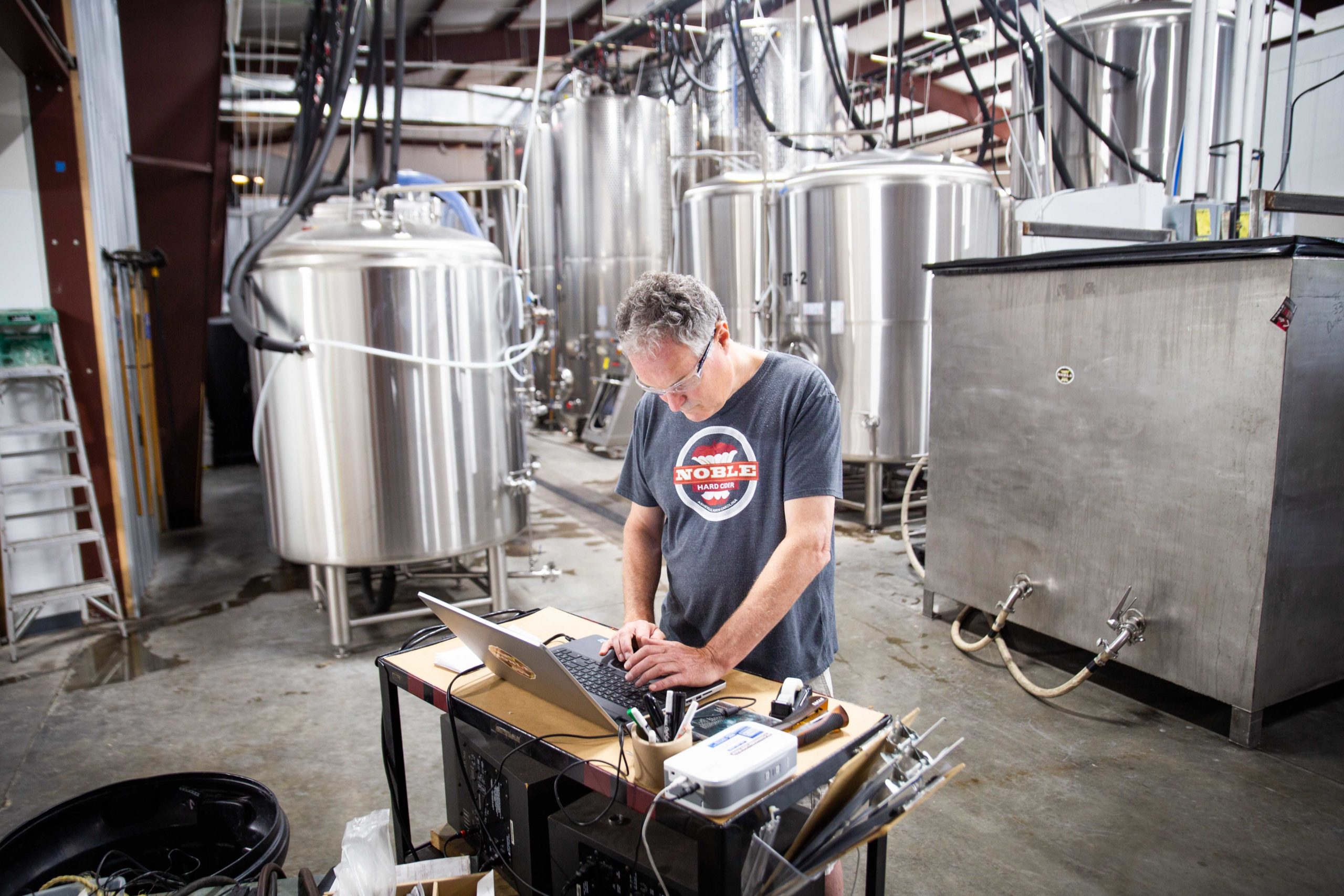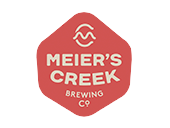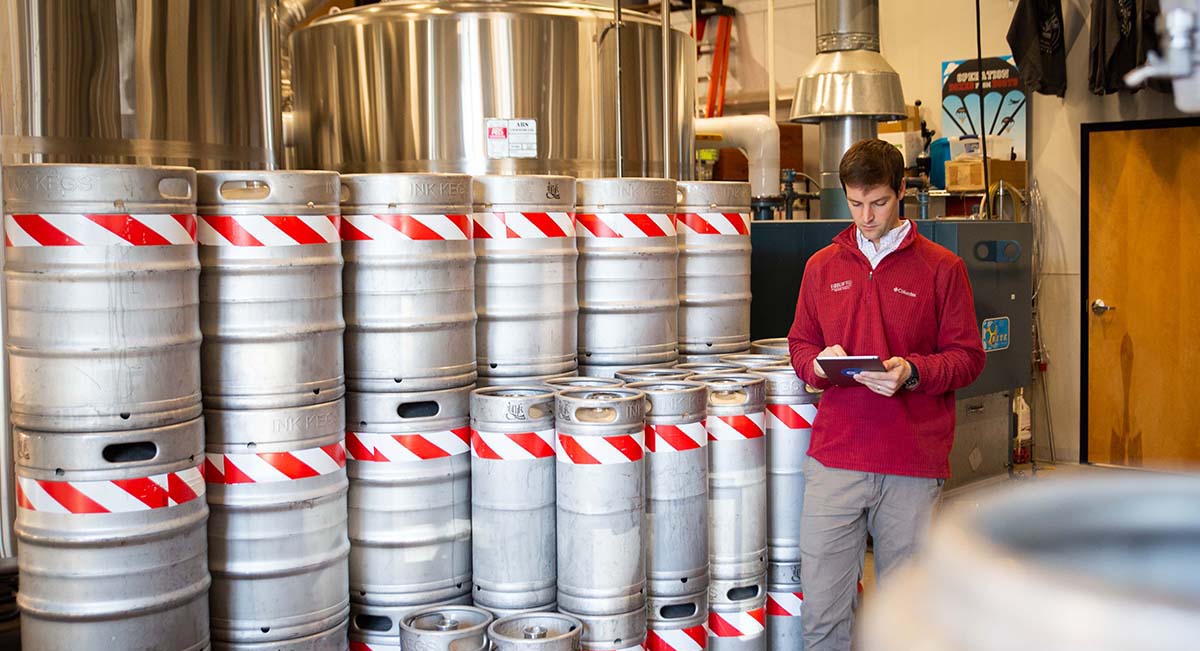There aren’t as many cidery startups as there are new breweries in the United States, but the number is growing. And in order to start one, it’s a best practice to have a cidery business plan. Cidery sales were up 11% in 2020, rolling in at $494.4 million. Want to be a part of that share? Gotta get organized first.
If you’re new to entrepreneurship, learning about everything that goes into it can be a tough pill to swallow. If you put some thought into it on the front end and run your business the right way, you can avoid major headaches down the line.
In this post, we’ll cover the four major areas of a cidery business plan (inventory, production, sales, and accounting) and considerations for each as well as a crucial aspect your hard cidery business plan might be missing and why you should include it.
Table of contents
The Four Major Areas of Any Cidery Business Plan
Inventory

As a cidery, your inventory is the foundation of your business. You must have the right quantity of batch ingredients, packaging materials, and finished product on hand at all times to fulfill future needs and avoid spending too much money when there’s no demand. Get these processes set up in your cidery business plan before you hit the ground running:
- Keeping track of inventory. If you purchase an item or it is depleted in the production process, how will your team know about it? (Note: Most teams start with clipboards and spreadsheets, but quickly learn this is far from a foolproof or comprehensive method, especially as you grow.)
- Inventory reorder forecasting. How will you know when it’s time to order more of an ingredient or packaging item? How will you align those needs with upcoming batches and sales orders?
Production

Once you have the inventory you need, you can focus on creating recipes and making your first batches. Here are some things to consider before you get started:
- Fruit sourcing. Is your cidery located on an apple orchard, or will you need to source apples from a local farm?
- Grinding/pressing equipment. If you’re sourcing apples from elsewhere, are you getting them raw/unpressed and pressing your own juice? Or are you buying fresh juice directly to make your life easier? If you decide to press your own juice, you’ll need to acquire grinding and pressing equipment.
- Fermentation tanks. How large a fermenter do you need (or can you afford) in the beginning? Stainless steel tanks are the most common and come in a variety of sizes, from 290 liters (77 gallons) to 530 liters (140 gallons) and beyond.
- Carbonation. Do you plan to capture natural CO2 with a gravity filler or add carbonation through a secondary fermentation process (assuming you’re carbonating them at all)? The answer determines what types of equipment you’ll need, in addition to how high your equipment costs will be. (Note: The production process won’t be cheap no matter what — it’s more about determining whether your highest costs will be equipment or labor. See this post from Cidernomics for more details.)
Sales
Like with all areas of your business, it’s ideal to have someone (or several people, eventually) on staff as a full-time salesperson. But realistically, in the beginning you’ll likely have a small group of people wearing many hats. That means you’ll have to work extra hard to create business partnerships and make those initial sales. It’s certainly not impossible.
When it comes to sales for your cidery business plan, you should think through these things:
- Distribution. Did you know that almost half of all cideries self-distribute while a whopping 82% use a third-party distributor? What’s your speed? Will you use a third-party beverage distributor or self-distribute your products? If the latter is the case, consider obtaining a dedicated van or truck for deliveries.
- Sales orders and invoices. How will you keep track of incoming sales orders and outgoing invoices? How will you keep records of whether a business has paid you? We’ve found that using technology to keep your sales team organized can help you sell more!
- Customer relationship management. Where will you store customer (or distributor) information so you know their order history, order preferences, and other important details? (Hint: Some sort of CRM system is ideal.) According to the 2022 report Building a Tech Stack: An Analysis of Breweries & Cideries, 53% of breweries and cideries are using their business management software to manage their customer information. Technology is becoming more and more prevalent in the alcohol sales space. We have also found that producers tracking all inventory and sales activities through a system like Ekos can identify 5-10% more product to sell that would otherwise be forgotten in a dark corner of the warehouse, slowly spoiling.
- DTC Sales. Picking a POS, ecommerce, or club system that’s right for your cidery can be a challenge. Looking for what’s most popular? Check this out to see what systems your peers are using. Our tech stack report found that 38% of breweries and cideries use Square as their POS system, 19% use Arryved, and 16% use Toast. No program is one-size-fits-all, so do your research here!
Accounting
Remember everything from your Accounting 101 class in college? No? Never even took Accounting 101? You’re not the only one. Unfortunately you will need to know the basics in order to keep an eye on how your business is doing and make sure you’re reporting accurate information to tax authorities.
It’s smart to use some type of accounting software, like QuickBooks or Xero, to keep track of everything. We also recommend finding a business management software solution that integrates with these programs. That way, your inventory, production, and sales numbers can sync right into your accounting platform. You’ll thank us later when you’re relaxing at home instead of doing data entry (yuck!). It’s also important to have someone (whether it’s a part-time bookkeeper, a contracted CPA, or a full-time CFO) dedicated to managing your cidery’s finances. As the owner, you’ll have your hand in a little bit of everything. It can be tough to find time to crunch numbers (and ensure they are accurate). Plus, it’s always best to have someone who actually knows a thing or two about accounting in charge of, well, accounting.
Before you start producing and selling, make sure you know how to handle these items:
- Setting up your chart of accounts. Will you treat taproom sales separately from wholesale? What categories are important for you to track? Who will ultimately be responsible for ensuring your chart of accounts is organized responsibly?
- TTB reporting. If you’re totally new to the cider industry, it might surprise you to learn that the TTB (the Alcohol and Tobacco Tax and Trade Bureau) regulates cider as a wine. Make sure you know what you’ll need to submit and how often (see Additional Resources at the end of this post).
The Crucial Piece Your Cidery Business Plan Is Missing

Everything mentioned above is a basic part of any inventory-based business, so you should be somewhat familiar with each of them before reading this post. But there is something many first-time cidery owners fail to consider. What tools will you use to manage all that information? How will you stay sane when there are ingredients to order, batches to make, invoices to check on, sales to fulfill, and tax reports to file?
First, take a deep breath. Then explore the world of cider management software. Designed to help you optimize every aspect of your business from inventory and production to sales and accounting. Cider software will help you keep track of ingredients and packaging items, create a batch schedule viewable by your entire team, manage sales orders and invoices, and sync (or import) your financial data into your chosen accounting software. Plus, the best systems also help you compile the data you need to stay compliant with tax authorities — easily one of the biggest headaches as a hard cidery owner.
How to Choose the Best Cidery Management Software
While the options for cider software aren’t as vast as other related industries, there are still a handful of contenders in the market. It can be confusing for owners to sift through software websites and try to figure out what’s best for your cidery business plan.
To help you save time on the research process, here’s a list of things that your chosen cidery management software should be able to do (if it’s any good):
- Track your cider inventory with a visual floor plan or in reporting format, depending on your preference
- Help you save on inventory costs by tracking incoming sales orders and basing inventory purchases on that information
- Automatically calculate production costs and plan for future batches based on past ingredient and packaging costs
- Create custom cider recipes and save them for future use
- Easily record split and blended batches to reflect how your production process actually works
- Allow you to confidently fulfill orders with on-the-spot inventory checks
- Generate invoices and sync them to major accounting software tools like QuickBooks or Xero
- Create custom sales and production dashboards with all your key metrics and save custom reports
- Access information from any device so your team can use it from anywhere — from sales reps on the road to the team on the production floor
Additionally, the company that makes the cider software should allow your team to provide direct feedback to their product specialists that is then considered for new feature releases. That way, you know the company is constantly working to improve the software for their users.
How Do You Find Software with All These Features?

That part is easy — choose Ekos. At Ekos, we are committed to helping craft cider makers in the U.S. and around the world make more cider with intuitive business management tools. Ekos’s cidery management software offers everything we mentioned above in one easy-to-use system that is tailored to the needs of cider makers. Each registered user on your team gets their own custom dashboard based on their specific role in your cidery, from management to sales, inventory, production, and beyond. We work with you directly to get your team set up and ensure you feel comfortable using Ekos as part of your daily routine. Plus, with personalized customer support and an expansive Knowledge Base filled with helpful instructional resources, we’re always here to help.
Reach out to us today to schedule your free demo and see how Ekos gives you the power to organize and optimize your cidery’s operations.
Go to Cider Business School — for Free!
Not there yet? No worries. Get more business management tips by watching our CEO, Josh McKinney, present this year’s Cider Business School. Our yearly webinar shares industry challenges, opportunities for growth, and best practices for saving you time and resources day in and day out at the cidery.
Additional Helpful Resources for Hard Cider Entrepreneurs
Hard Cider Sales Slip and Then Rebound (Forbes)
The Cost of That Fizz in Your Cider (Cidernomics)
TTB Cider Resources
TTB Application Process for Becoming a Member of the Wine Industry





